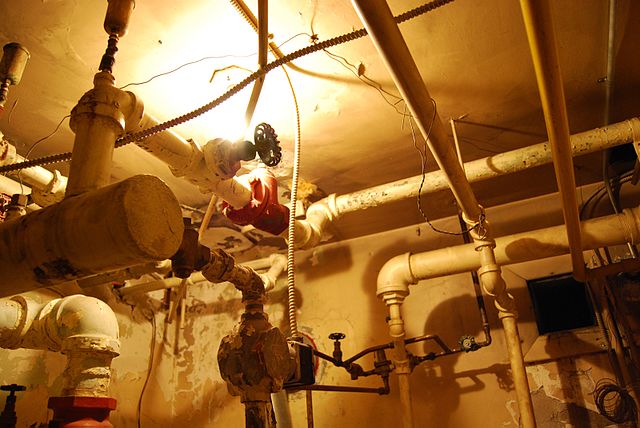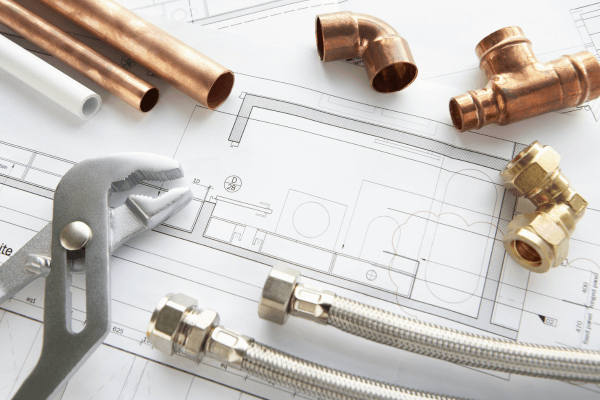What are your ideas regarding Anatomy of a House: Understanding the Components?

Understanding just how your home's plumbing system functions is necessary for every home owner. From providing clean water for alcohol consumption, cooking, and showering to safely removing wastewater, a properly maintained pipes system is important for your family's health and wellness and comfort. In this detailed guide, we'll check out the intricate network that comprises your home's pipes and offer pointers on maintenance, upgrades, and managing common problems.
Intro
Your home's plumbing system is more than just a network of pipelines; it's a complex system that guarantees you have accessibility to clean water and reliable wastewater removal. Understanding its parts and just how they work together can aid you prevent expensive fixings and ensure everything runs smoothly.
Standard Parts of a Pipes System
Pipes and Tubing
At the heart of your pipes system are the pipelines and tubing that bring water throughout your home. These can be constructed from various materials such as copper, PVC, or PEX, each with its benefits in regards to sturdiness and cost-effectiveness.
Components: Sinks, Toilets, Showers, etc.
Fixtures like sinks, bathrooms, showers, and tubs are where water is made use of in your house. Recognizing how these fixtures link to the pipes system aids in diagnosing problems and intending upgrades.
Valves and Shut-off Points
Valves manage the circulation of water in your pipes system. Shut-off shutoffs are critical throughout emergency situations or when you require to make fixings, allowing you to separate parts of the system without disrupting water flow to the whole house.
Supply Of Water System
Key Water Line
The main water line connects your home to the local water supply or a personal well. It's where water enters your home and is dispersed to various fixtures.
Water Meter and Pressure Regulatory Authority
The water meter procedures your water use, while a pressure regulator makes sure that water flows at a secure pressure throughout your home's plumbing system, avoiding damages to pipes and fixtures.
Cold Water vs. Hot Water Lines
Comprehending the difference in between cold water lines, which provide water directly from the main, and warm water lines, which carry heated water from the hot water heater, helps in fixing and preparing for upgrades.
Water drainage System
Drain Pipeline and Traps
Drain pipelines lug wastewater far from sinks, showers, and toilets to the sewage system or sewage-disposal tank. Traps stop sewer gases from entering your home and likewise catch debris that could trigger obstructions.
Air flow Pipes
Ventilation pipelines enable air right into the water drainage system, avoiding suction that might slow drainage and trigger traps to empty. Appropriate air flow is necessary for preserving the honesty of your plumbing system.
Significance of Appropriate Drain
Making sure proper drainage prevents backups and water damage. Frequently cleansing drains pipes and keeping catches can stop expensive repair services and prolong the life of your plumbing system.
Water Heating Unit
Sorts Of Hot Water Heater
Hot water heater can be tankless or standard tank-style. Tankless heaters heat water on demand, while storage tanks keep heated water for instant use.
Upgrading Your Plumbing System
Factors for Updating
Upgrading to water-efficient fixtures or replacing old pipelines can enhance water high quality, decrease water bills, and increase the worth of your home.
Modern Pipes Technologies and Their Benefits
Discover modern technologies like smart leak detectors, water-saving commodes, and energy-efficient hot water heater that can save cash and minimize environmental impact.
Price Factors To Consider and ROI
Determine the upfront prices versus long-lasting financial savings when taking into consideration plumbing upgrades. Several upgrades spend for themselves through reduced utility expenses and less fixings.
Exactly How Water Heaters Connect to the Pipes System
Comprehending just how water heaters connect to both the cold water supply and warm water distribution lines helps in identifying issues like insufficient warm water or leaks.
Upkeep Tips for Water Heaters
Consistently flushing your hot water heater to get rid of sediment, checking the temperature level settings, and inspecting for leaks can expand its life expectancy and boost power performance.
Typical Plumbing Problems
Leaks and Their Reasons
Leaks can happen because of aging pipelines, loosened fittings, or high water stress. Addressing leaks immediately prevents water damage and mold and mildew growth.
Blockages and Obstructions
Obstructions in drains and toilets are typically brought on by purging non-flushable things or a buildup of grease and hair. Utilizing drainpipe displays and bearing in mind what goes down your drains can protect against obstructions.
Indicators of Plumbing Troubles to Look For
Low tide stress, slow drains, foul odors, or uncommonly high water costs are signs of prospective pipes problems that ought to be attended to without delay.
Plumbing Maintenance Tips
Routine Inspections and Checks
Schedule yearly plumbing examinations to capture issues early. Search for indications of leakages, deterioration, or mineral buildup in faucets and showerheads.
DIY Maintenance Tasks
Basic tasks like cleaning faucet aerators, checking for toilet leakages using color tablets, or insulating revealed pipelines in cool environments can protect against significant pipes problems.
When to Call an Expert Plumbing Technician
Know when a pipes problem needs expert know-how. Attempting intricate fixings without appropriate understanding can result in more damage and greater fixing prices.
Tips for Lowering Water Usage
Easy habits like fixing leakages without delay, taking much shorter showers, and running complete lots of washing and meals can preserve water and reduced your energy costs.
Eco-Friendly Plumbing Options
Take into consideration lasting plumbing materials like bamboo for flooring, which is durable and environment-friendly, or recycled glass for counter tops.
Emergency Readiness
Steps to Take Throughout a Plumbing Emergency
Know where your shut-off shutoffs lie and exactly how to turn off the water in case of a ruptured pipe or major leakage.
Value of Having Emergency Calls Useful
Maintain get in touch with information for neighborhood plumbers or emergency situation solutions readily offered for quick response throughout a plumbing situation.
Environmental Impact and Preservation
Water-Saving Fixtures and Appliances
Setting up low-flow faucets, showerheads, and commodes can significantly lower water usage without compromising performance.
Do It Yourself Emergency Fixes (When Applicable).
Momentary solutions like utilizing duct tape to spot a leaking pipeline or placing a container under a dripping tap can reduce damages until a specialist plumbing shows up.
Verdict.
Comprehending the anatomy of your home's pipes system empowers you to preserve it effectively, saving money and time on repair work. By complying with normal upkeep routines and staying informed regarding modern-day pipes technologies, you can guarantee your plumbing system operates effectively for several years ahead.
Understanding Your Home Plumbing System: A Comprehensive Guide
Plumbing System: The Lifeline of Your Home
At its core, the plumbing system is designed to perform two primary functions: bring fresh water into your home and remove wastewater. The system is a network of pipes, fixtures, and other components that transport water and sewage. Residential plumbing systems include potable water supply lines, drain-waste-vent (DWV) systems, and various plumbing fixtures that make water use in daily tasks possible.
Key Components:
Water Supply: This part of your plumbing system brings municipal water into your home, passing through the main water supply line. It s responsible for supplying all water needs, from drinking to bathing.
Drainage System: It carries waste and water away from your home to the sewer or septic system. This system includes all the piping within your home that leads to external sewage or septic systems.
Vent System: An essential yet often overlooked component, the vent system allows sewer gases to escape and lets air into the drainpipes, ensuring water and waste move correctly through the system.
Fixture: More Than Just Taps and Toilets
Plumbing fixtures are the most interactive parts of the plumbing system, including faucets, showers, toilets, and sinks. Each fixture is connected to the plumbing system and plays a role in either the delivery of freshwater or the disposal of waste and wastewater.
Types of Fixtures:
Faucets and Sinks: Used for washing hands, dishes, and other daily water needs. Toilets: Dispose of human waste through the sewage system. Bathtubs and Showers: Provide bathing facilities, requiring both hot and cold water supply. Water Supply: The Source of Life
The water supply system is a critical component, ensuring that potable water is available throughout your home for various uses, including drinking, cooking, and cleaning. This system consists of pipes that distribute water to different parts of the house, controlled by valves to regulate the water flow.
Types of Plumbing: Materials and Methods
Various types of plumbing systems and materials are used in residential settings, each with its advantages and applications. From copper and PVC pipes for water supply to cast iron and ABS for drainage, the choice of materials can impact the longevity and efficiency of your plumbing system.
https://intownplumbingtx.com/articles/home-plumbing-system-guide/

As a devoted reader on Exploring Your Homes Plumbing Anatomy, I think sharing that post was a great idea. So long as you appreciated our article if you please make sure you remember to pass it around. Thank-you for going through it.
Hire A Pro